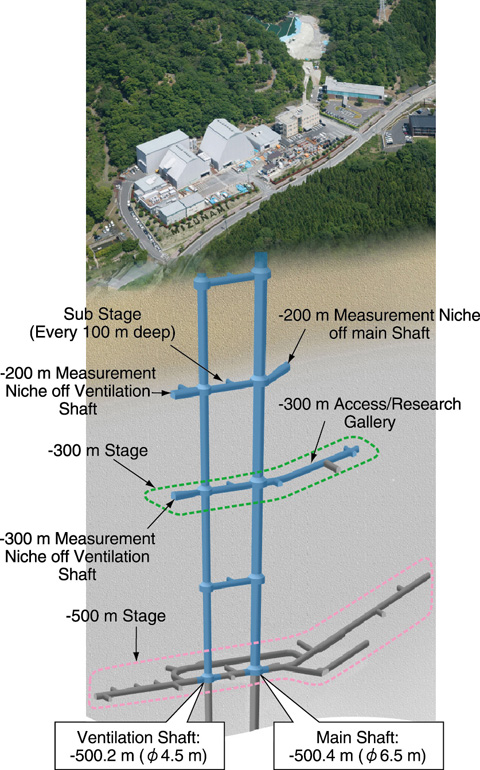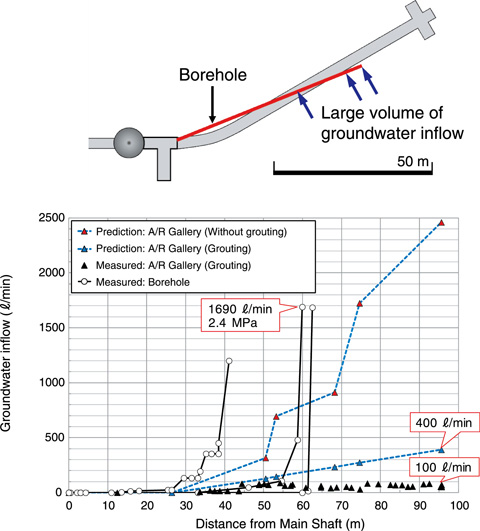
Fig.13-26 Layout of the Mizunami Underground Research Laboratory

Fig.13-27 Predicted and measured groundwater inflow during excavation of A/R Gallery and drilling borehole
The Mizunami Underground Research Laboratory is currently under construction in Mizunami City. As of March 2012, the Main and Ventilation Shafts have been excavated to GL -500 m (meters below ground level, Fig.13-26).
To mitigate potential excess groundwater inflow, pre-excavation grouting was conducted before the excavation of the shafts and tunnels. Grouting refers to the injection of material such as cement into open fractures in a rock mass to stabilize and seal the rock. In planning the construction, it was necessary to obtain reliable preliminary information on the bedrock conditions in terms of the rock mass stability and hydrogeology. Therefore, site characterization borehole investigations were conducted before excavation began. These investigations indicated that large groundwater inflow could be expected during excavation.
Fig.13-27 shows the results of grouting around the -300 m Access/Research (A/R) Gallery. In this area, maximum groundwater inflows in excess of 1000 L/min were expected at several locations during borehole drilling. This area also has relatively high groundwater pressure (2.4 MPa). Grouting using ordinary Portland cement was performed in this geological environment, and the measured total groundwater inflow after excavation of the -300 m A/R Gallery was actually about 100 L/min. Consequently, we conclude that existing grouting technology is applicable in deep underground environments and under high groundwater pressure conditions.
The grouting technology was improved and optimized through several grouting trials during excavation, and the method can be applied to rock masses with a wide conductivity range under relatively high groundwater pressure conditions. Existing grouting technology using ordinary Portland cement and super-fine cement was demonstrated to reduce the conductivity of a rock mass in the range of 10-7 m/s. Furthermore, grouting methodology using liquid-type grout material was also tested in the -300 m Measurement Niche. The methodology will be applied for grouting rock masses under 10-7 m/s. The excavations have shown that the pre-excavation grouting was successful and the targeted reduction in inflow was achieved. Thus, the results indicate that this methodology is effective in reducing water inflow.